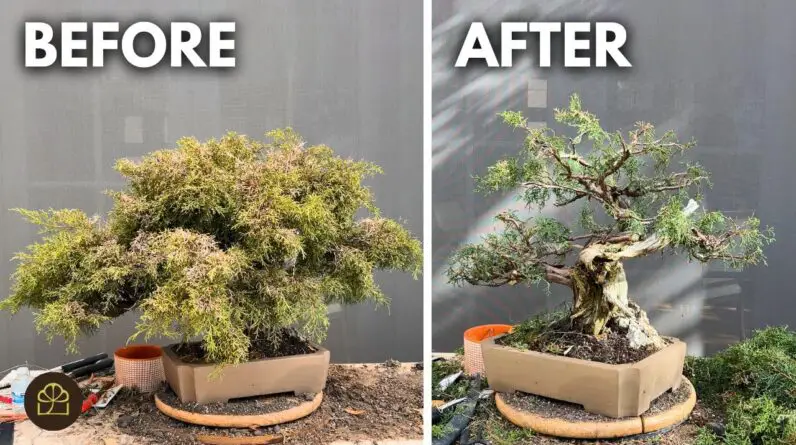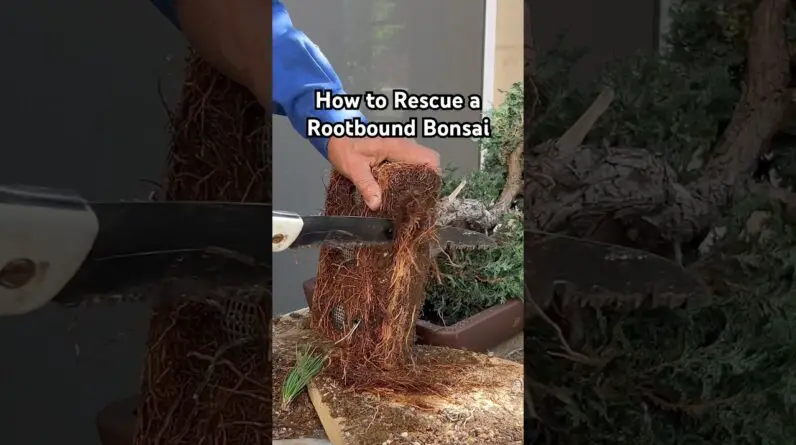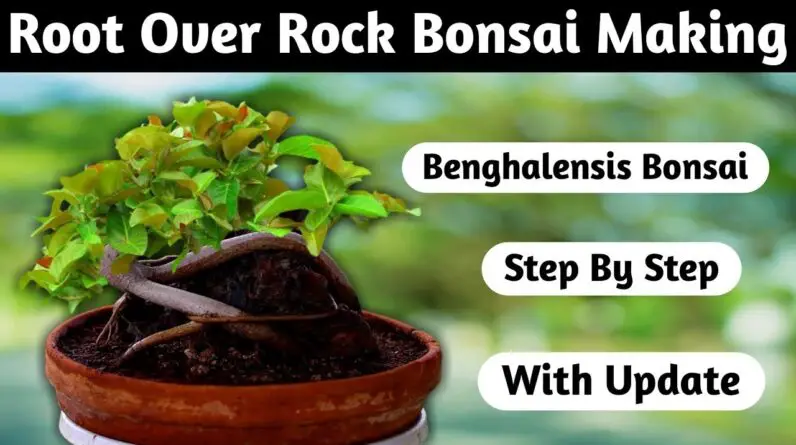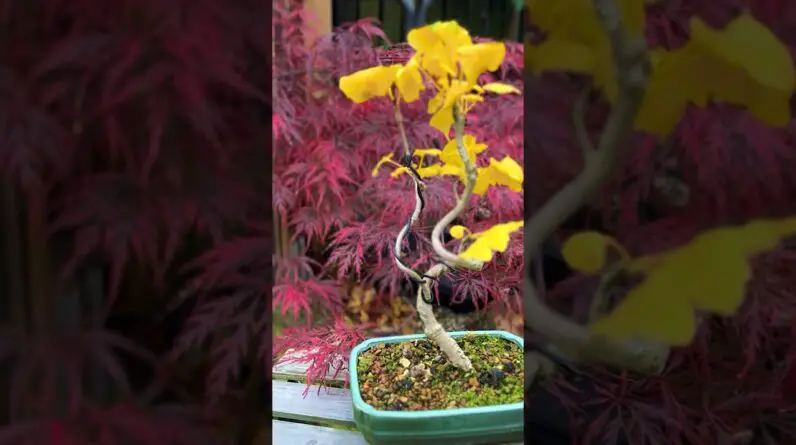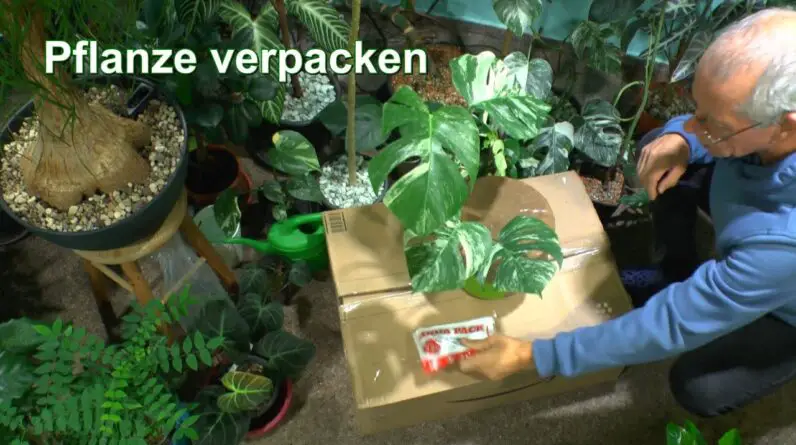Wish to discover how to make an Apple bonsai tree? In this video by Bonsai Empire, they reveal you exactly how to prune and wire an Apple tree that is around 15 years old. The video was shot during fall, when the tree was filled with tiny apple trees.
Bonsai Empire is passionate regarding sharing the living art of Bonsai and produced this DIY tutorial to aid and influence newbies. This video becomes part of their on-line training courses, yet they supply many other free videos also.
So if you have an interest in discovering more concerning Bonsai methods, head over to Bonsai Realm’s site!
In the video clip, they explain the process of pruning and circuitry this Apple bonsai tree. They utilize small pruning shears, pliers, and cable cutters. The top branch is the first to be trimmed, and afterwards they concentrate on 2 thicker branches to achieve the preferred silhouette.
They show the relevance of a 360-degree approach when trimming and electrical wiring to prevent any dead angles. After the pruning and electrical wiring, the tree looks a lot more refined and well balanced. With normal maintenance, this tree will remain to flourish and grow new branches in the upcoming spring. If you want to discover more about pruning, wiring, and repotting methods, take into consideration signing up with Bonsai Empire’s on the internet courses and get to specialist advice and the opportunity to ask the trainers inquiries straight.
Apple Bonsai Tree: An Introduction
Welcome to the world of apple bonsai trees! Producing and cultivating a mini apple tree can be a fulfilling and satisfying hobby. Not only do these bonsai trees provide a stunning aesthetic, however they likewise use the chance to grow your own fruits in a small and manageable area.
In this comprehensive article, we will certainly lead you via the procedure of selecting the best apple tree selection, gathering the essential materials, expanding the tree from seeds, trimming and circuitry strategies, proper maintenance, potting factors to consider, and the distinctions in between outside and indoor apple bonsai trees.
Take into consideration the Dimension of the Bonsai
When choosing an apple tree selection for bonsai growing, it is necessary to take into consideration the utmost dimension of the tree. Since bonsai trees are implied to be mini variations of their bigger equivalents, picking a range that normally remains small is necessary. Seek apple tree varieties that are recognized for their portable development and smaller sized stature, such as columnar apple trees or naturally dwarf varieties. This will make sure that your bonsai continues to be symmetrical and is much easier to handle.
Choose a Crab Apple Tree Selection
Crab apple trees, with their small and lively fruits, are often the recommended selection for apple bonsai cultivation. These trees naturally have much more delicate and proportional features, making them appropriate for bonsai appearance. Additionally, crab apple trees are durable and adaptable, making them easier to care for and maintain as bonsai specimens. Think about varieties such as Malus sylvestris or Malus floribunda, which are typically utilized in bonsai growing.
Consider the Climate and Place
Before selecting the apple tree variety for your bonsai, it is very important to consider the climate and area where you plan to expand it. Different apple tree ranges prosper in various climates, so select a selection that is fit to your particular area. Furthermore, keep in mind the quantity of sunlight and temperature needs of the picked range. Most apple trees call for complete sun to thrive, so make sure that your picked location supplies adequate sunshine throughout the day.
Select an Ideal Bonsai Pot
Choosing the right bonsai pot is essential for the health and wellness and aesthetic appeals of your apple bonsai tree. Look for a pot that is in proportion to the dimension of your tree and enhances its general design. Bonsai pots can be found in numerous products such as ceramic, plastic, or clay. Each material has its own benefits and considerations, so select one that fits your personal choices and the certain requirements of your apple bonsai tree.
Acquire High Quality Bonsai Dirt
Premium bonsai dirt is necessary for the healthy and balanced growth of your apple bonsai tree. The soil needs to give appropriate drainage while keeping enough moisture for the tree’s roots. You can buy pre-made bonsai soil blends that are particularly designed for bonsai farming, or you can develop your very own mix by integrating components such as Akadama, pumice, and lava rock. Experimentation with various soil mixtures may be needed to find the ideal equilibrium for your apple bonsai tree.
Get Trimming and Circuitry Tools
Pruning and electrical wiring are essential methods for forming and maintaining the form of your apple bonsai tree. To effectively prune and wire your bonsai, you will require a set of correct devices. Some essential devices include a concave branch cutter for exact trimming, bonsai cord cutters for managing the wire, and pliers or tweezers for complex job. Purchase top notch tools to ensure accuracy and reduce damages to your apple bonsai tree.
Accumulating Apple Seeds
Among one of the most rewarding methods to start an apple bonsai tree is by expanding it from seeds. You can gather apple seeds from ripe fruits or buy them from respectable suppliers. Ensure that the seeds are fresh and viable for the best opportunities of germination.
Preparation of Seeds for Growing
Before growing the apple seeds, it is necessary to prepare them for ideal germination. Start by saturating the seeds in water for 24 hours to soften the external seed layer. After saturating, remove the seeds from the water and enable them to dry for a few days. This process helps damage the seed’s dormancy and boosts the chances of effective germination.
Growing and Germination Refine
As soon as the seeds are prepared, plant them in little pots loaded with well-draining bonsai soil. Place the pots in a warm and bright area, and maintain the dirt regularly damp. Germination usually takes about 2 to 4 weeks, relying on the range and environmental problems. As soon as the seedlings have grown, select the healthiest ones to continue growing as your future apple bonsai trees.
Comprehending Trimming Methods
Trimming is a vital element of bonsai cultivation that assists preserve the tree’s dimension, shape, and total visual appeals. By uniquely eliminating branches and foliage, you can accomplish the preferred kind and balance. Discover various pruning methods such as maintenance pruning, branch pruning, and squeezing to keep the health and wellness and shape of your apple bonsai tree.
Determining the Right Branches to Prune
When pruning your apple bonsai tree, it is very important to recognize the branches that require to be pruned. Search for branches that interfere with the wanted kind or impede the tree’s total equilibrium. Get rid of any dead, harmed, or unwanted branches to promote healthy development and stop condition. Seek advice from bonsai resources or look for assistance from skilled bonsai lovers if you’re not sure which branches to prune.
Pruning to Accomplish Preferred Shape
Pruning is not only about maintenance but also concerning forming your apple bonsai tree. Usage pruning methods to lead the tree’s growth and accomplish the wanted shape and style. Think about standard bonsai forms such as formal upright, slanting, or cascade, and adapt them to fit the characteristics of your apple bonsai tree.
Preparing the Tree for Wiring
Circuitry is an additional necessary strategy in bonsai growing that aids produce and keep the wanted form and structure of your apple bonsai tree. Prior to applying wires, guarantee that the branches and trunk are versatile sufficient to be manipulated without creating damage. Younger branches are extra adaptable and much easier to wire, while older branches may call for steady flexing with time.
Selecting the Right Cord Dimension
Selecting the appropriate wire dimension is important to avoid harming the branches of your apple bonsai tree. The wire ought to be strong sufficient to hold the desired shape without cutting into the bark. Pick a cord dimension that is about one-third of the thickness of the branch being wired. Copper or aluminum wire is typically used, however make sure it is soft sufficient to be conveniently formed.
Using Wiring Methods
To wire your apple bonsai tree, beginning by covering the cord at the base of the branch or trunk and after that gently spiral it upwards, seeing to it to maintain a 45-degree angle in between the cable and the branch. Be careful not to cover the wire also snugly, as it can limit the tree’s blood circulation and create damage. When the desired form is attained, secure the wire by turning the ends together or making use of cord clips. Get rid of the wire after a few months to stop it from cutting into the bark.
Watering and Dampness Control
Correct watering is vital for the health and vitality of your apple bonsai tree. The frequency and quantity of water needed depend on numerous factors such as the environment, pot dimension, and tree’s growth phase. Water your apple bonsai tree when the leading inch of soil feels completely dry, guaranteeing that the water reaches the entire root system. Avoid overwatering, as it can result in root rot and other fungal conditions.
Feeding and Nutrient Needs
Keeping soil fertility is important for the healthy growth of your apple bonsai tree. Apply a well balanced plant food throughout the expanding season to offer the needed nutrients for optimum development. Usage organic or slow-release fertilizers particularly developed for bonsai trees, adhering to the advised dosage instructions. On a regular basis keep an eye on the tree’s reaction to fertilization and change the feeding routine appropriately.
Pest and Condition Management
Like any other plant, apple bonsai trees can be prone to various insects and illness. Regularly check your tree for indicators of invasion, such as blemished leaves, insects, or uncommon growth. If any issues are spotted, quickly take proper actions to regulate and remove the problem. Think about utilizing organic pest control methods or speak with specialists if needed.
Repotting Frequency and Timing
Repotting is a necessary task in bonsai cultivation that allows for root system health and total growth control. The frequency and timing of repotting rely on numerous aspects such as the age and growth price of the apple bonsai tree. As a basic guideline, repotting is generally done every 2 to 3 years, ideally throughout the very early spring prior to the tree starts actively expanding.
Picking an Appropriate Bonsai Pot
When repotting your apple bonsai tree, select a new pot that is somewhat larger than the current one. Consider the aesthetic appeals and total balance of the tree when picking the pot’s shape and design. Ensure that the pot gives appropriate drainage holes and is made from a material that is suitable for bonsai growing.
Hair Transplanting and Origin Trimming
During repotting, very carefully remove the tree from its existing pot and carefully loosen the origin round. Examine the roots and cut any type of damaged or excessively lengthy origins. This process, referred to as root pruning, assists stimulate new root development and maintains the tree’s origin system portable. After origin trimming, place the tree in the new pot, making sure that the roots are uniformly dispersed and covered with fresh bonsai soil.
Appropriate Potting Techniques
When potting your apple bonsai tree, usage appropriate techniques to ensure its security and healthy and balanced development. Placement the tree slightly off-center in the pot to develop a feeling of activity and equilibrium. Secure the tree in place making use of bonsai wires or rocks, and fill the staying area in the pot with bonsai dirt, making certain that no air pockets are left. Water the newly potted tree extensively and check its recuperation during the adhering to weeks.
Advantages and Considerations for Outdoor Bonsai
Growing an outdoor apple bonsai tree allows it to experience the natural altering seasons, which can enhance its overall beauty. Outdoor bonsai trees generally have more space to grow and develop a stronger root system. However, outdoor bonsai trees require careful consideration of climate and weather conditions, protection from extreme temperature fluctuations, and regular exposure to sunlight.
Benefits and Challenges of Indoor Bonsai
Growing an apple bonsai tree indoors provides more controlled conditions and allows enthusiasts in colder climates to enjoy bonsai cultivation year-round. Indoor bonsai trees require careful attention to temperature, humidity, and lighting conditions. Supplemental lighting may be necessary, especially during the winter months when sunlight exposure is limited. Additionally, indoor bonsai trees may require more vigilant pest and disease management due to the controlled environment.
Creating and caring for an apple bonsai tree is a rewarding and fulfilling endeavor. With proper knowledge and techniques, you can enjoy the beauty of nature in a miniature form and even grow your own miniature apples.
By choosing the right variety, gathering the necessary materials, mastering pruning and wiring techniques, maintaining proper care, and selecting the right pot and location, you can cultivate a stunning apple bonsai tree that brings joy and tranquility to your surroundings.
Happy bonsai cultivation!
[sspostsincat category=”Can You Bonsai An Apple Tree”]



